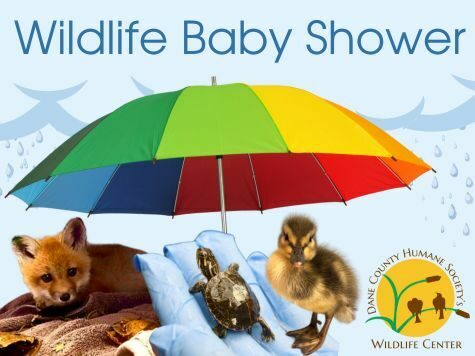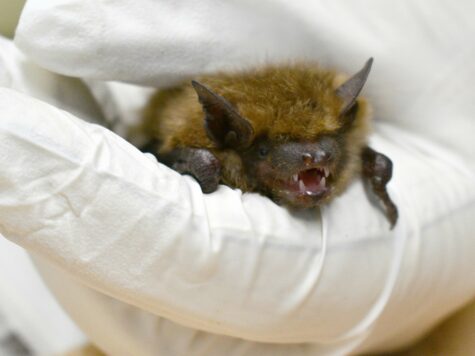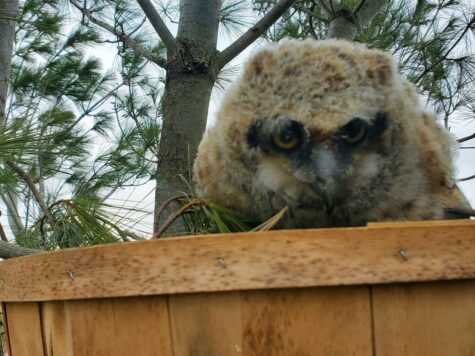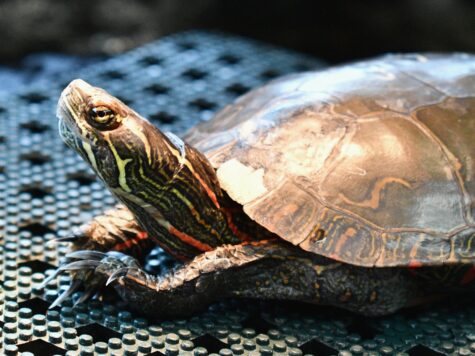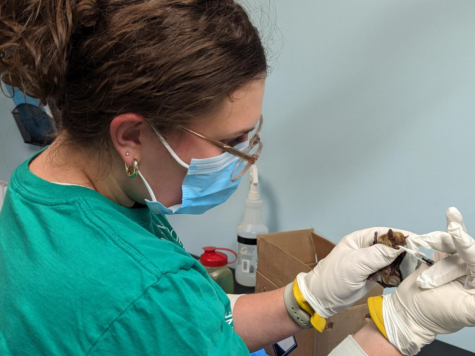The holiday season is upon us, and for many, that means decorating our homes, gathering with family for lots of food, and celebrating old traditions or making new ones. Whether you’re going to visit your family or friends, or they’re coming to you, it’s worth considering how your pets will fit into the fun. And remember that leaving your pets at home with a trusted person to care for them may be the best answer for everyone, including you and your pets, to enjoy their holiday.
When you’re decorating for the holidays
1. Choose your ornaments and trimmings wisely.
Think carefully about the decorations you choose and where you put them. If they’ll be within reach of your pets (and keep in mind that some cats will climb), there are some items to look out for.
“Be aware that hanging sparkly things may attract unwanted attention from pets, especially cats and young dogs,” says Dr. Tristan Daugherty-Leiter, DVM, of VCA Veterinary Emergency Service & Veterinary Specialty Center. “Tinsel is a favored object of ingestion for cats, and can cause significant issues, such as a gastrointestinal (GI) obstruction.”
In fact, Dr. John Silbernagel, DVM, at Madison Veterinary Specialists, tells us that linear objects (like tinsel) are one of the most common things they have to surgically remove from cats.
Dr. Uri Donnett, DVM, DCHS’s Chief Shelter Veterinarian, elaborates as to why.
“If cats eat things like string, hair ties, or tinsel it can create what we call a linear foreign body,” he explains. “This means that one end of the string passes into the intestines, while the other stays anchored in the stomach or sometimes even in the mouth around the tongue. The GI tract tries to move the string along but can't, and instead this creates a lot of damage to the intestines. It’s painful and can result in death if left untreated too long. Generally, these require an expensive surgery to remove the foreign body.”
And cats aren’t the only animals that face GI concerns. Uri adds, “Ferrets can definitely get into things and have similar concerns to dogs and cats related to GI upset from foreign bodies or eating things they shouldn’t.”
2. Protect electrical wires and cords from chewing.
Light displays are a favorite this time of year, but if you have one inside your home, make sure to take precautions.
“Cords are always an issue with young pets,” says Tristan. Plus, critters like rabbits and rats of any age can be tempted by cords as well.
Uri explains, “An added concern is chewing on all the extra electrical wires that come with holiday light displays. If people have house rabbits or other animals that are loose in the house,” he suggests, “they should be sure to protect the wires from chewing. Obviously a chewed wire ruins a beautiful light display, but it can also cause electrical shocks and burns to the animal.”
Try to keep electrical wires and cords out of your pets’ reach. If they need to be in a place accessible by your pet, then make sure to protect them from being played with or chewed.
3. Research the decorations you might want to use.
In addition to tinsel, sparkly ornaments, cords, and dangling objects, pet owners should look out for other favorite holiday decorations. For example, some of the live plants we like to place around our homes can be toxic to animals.
“Poinsettias cause mild to moderate stomach upset but are not that toxic,” Tristan explains. “While not as common this time of year, true lilies, such as Stargazer, Tiger, Day, Asiatic, and Easter are all highly and fatally toxic to cats. Peace lilies are not true lilies and only cause mild GI upset.”
When choosing your holiday decorations, do a little extra research to find out how dangerous they might be to your pets. If they can potentially cause harm, make sure to place them well out of your furry friends’ reach or skip them altogether.
When your friends and family visit you
You might want to set some ground rules with your friends and family before they come over, especially if they’re bringing young kids.
1. Instruct guests on how to interact with your pet.
“Be aware that many dog bites happen when kids are trying to express love by hugging and being close to dogs,” explains Erin Kruckenberg, a Canine Behavior Specialist at DCHS. The kids might just want to show affection, but the dog could feel trapped or threatened by a hug or stranger.
“Food or toy guarding can be an issue, too,” adds Jessica Marchant, DCHS’s Canine Behavior Team Supervisor. “If the animal has something the human wants, they should trade for it. Don’t chase – this can make dogs think it’s a game, or they may ingest it quickly, causing obstructions. And grabbing the item out of their mouth could cause a bite.”
Kenzie Korpela, an Admitting Technician with DCHS, provides some insight on cats. “Make sure kids and their parents know not to chase cats, pull on tails, grab legs or feet, or pet backwards. It might also be a good rule to not have kids pick up cats unless there is an adult to help hold the cat or supervise.”
For cats that enjoy playing with people, Kenzie suggests making sure friends and family understand that hands are not toys. “If a cat is sensitive to a certain area of their body,” she adds, “head shy, don’t touch the booty, etc., make sure to share that with everyone before they interact with your cat to avoid bites and swats.”
DCHS offers various resources on pet care, including information about body language of dogs and cats. These resources can help you identify signs of stress in your pets.
And of course, Kenzie adds, “Be really watchful of the door if you have an animal that is interested in going on a holiday adventure.”
2. Ensure guests understand how much and what they can feed your pet.
If your guests want to share some delicious treats with your pets, make sure you set limits.
“Keep in mind that friends or extended family members may have different opinions about what is deemed ‘too many treats or table scraps,’” says Tristan. “In particular, kids enjoy rapid fire feeding of treats which can cause significant stomach upset in some dogs.”
It’s also worth keeping an eye on what your guests give to your pets. There are some foods dogs and cats should never eat.
“Garlic and onions can cause an animal’s red blood cell count to drop, and high fat foods (i.e. gravy, turkey drippings, etc.) can cause major GI upset,” Tristan explains. “Chocolate is abundant this time of year, and something we see daily at our ER room. It is toxic to both dogs and cats.”
Though, it sounds like dogs are more likely to gobble chocolate if given the chance than cats.
“Luckily, chocolate ingestion by cats is fairly unusual,” says Tristan, “as they would rather eat the aforementioned tinsel.”
Kenzie adds, “Cats are going to be a little more sneaky when it comes to gatherings where people leave plates and cups on tables.” So, make sure to keep an eye on items left out, or clear the items as soon as guests are finished.
3. Provide a safe space for your pet.
While some dogs, cats, and critters will enjoy all the extra attention, others may not.
“If you are having a large gathering,” Tristan adds, “the more skittish cat or dog members of the household may enjoy a spa day in a bedroom away from all the action, with food, water, and litter close by.”
Even if your pet doesn’t want to avoid guests for the entire visit, Erin points out that it’s still important they have a quiet place away from the hubbub.
“Give them a space they can choose to be in,” she says, “somewhere kids and guests won’t be so they can choose not to interact with people if they would rather not.”
Whether you keep your pets contained and away from the excitement or simply provide a place they can go where people aren’t is a judgment call you can make based on your knowledge of your pet. Kenzie adds, “In both cases, make sure food, water, box, and snuggly spaces are in the same space in case they don’t want to venture out at all.” That way, your pet won’t have to choose between feeling safe and being comfortable.
4. Advocate for your pets.
“Advocate for your pets if you think someone or something is making them uncomfortable,” Erin says. You know your pets best. If something is upsetting them, make sure your guests understand it’s time for your pets to take a break from the excitement.
Kenzie adds, “Your friends and family know that you care about your pet and should understand you setting some ground rules."
When you visit friends and family who have pets
1. Treat their pets as you would want yours to be treated.
“Use common sense and courtesy,” Tristan says. “Teach children how to approach animals, especially when first meeting them.” Learn to read cat and dog body language to teach children when to approach and when to give animals their space.
You can also ask your host if there is anything you should know about their pet, inviting them to share any ground rules they may have.
“Some people don’t think to share with guests what things their animals like or don’t like,” Kenzie points out. “So be a good guest and ask!”
2. Make a travel plan for your pets.
If your friends and family love your furry family members as much as you do, they may be thrilled for you to bring your pets to stay. This can be fun for everyone, including your pets, but make sure you plan ahead.
“Bring things that smell like home,” says Erin, “like a favorite blanket in their crate or a t-shirt you’ve worn recently that smells like you.”
If you’re travelling by car, plan how to keep your pet contained and safe. “It’s especially risky on longer trips,” Kenzie says, “because if the pet escapes, you’d be far from home.”
You can also consider talking with your veterinarian about stress-relieving tips or medications, like pheromone sprays or collars, cat-friendly music, covering an animal’s crate with a towel or blanket, and/or stress medications or treats.
And when you arrive at your destination, start your cat with a home base.
“It’s the same thing we recommend for adopters,” Kenzie says. “It’s a new environment, so you’d approach introducing it the same way. Give your cat one room with all of their needs (food, water, box, snuggly space), let them get comfortable there, and then slowly introduce them to the rest of the place. If it’s a short visit, it might just be easiest to have the cat stay in the home base for the entire visit.”
If your hosts have pets of their own, make sure you and they work together to ensure the safety of all the animals.
“Don’t assume two dogs will get along just because they are the same species,” Tristan warns. “Introduce slowly and monitor.”
Cats tend to need much longer introductions with other cats, so if they haven’t met your hosts’ cats yet, it’s probably best to keep cats from different households separate. Remember that it’s nearly impossible to predict how any two individual cats will get along.
And if you’re bringing together animals of different species, it’s important to protect both animals. Many dogs and cats get along very well, especially if they have prior experience living with the other species, but it’s still difficult to predict exactly how they’ll interact. Make sure both animals feel safe and have a pleasant experience while getting acquainted, and keep in mind that it may be safer just to keep them separate.
DCHS has detailed instructions for introducing pets to one another. While these resources are designed for introducing an animal into their new home, they can still be useful when introducing pets to their temporary housemates.
Remember to have fun!
“Just use common sense and be aware of your surroundings,” says Tristan. “Most pets enjoy the holiday chaos just as much as we humans do.”
For more information about pet care and handling, check out DCHS’s Pet Care Tips page.

